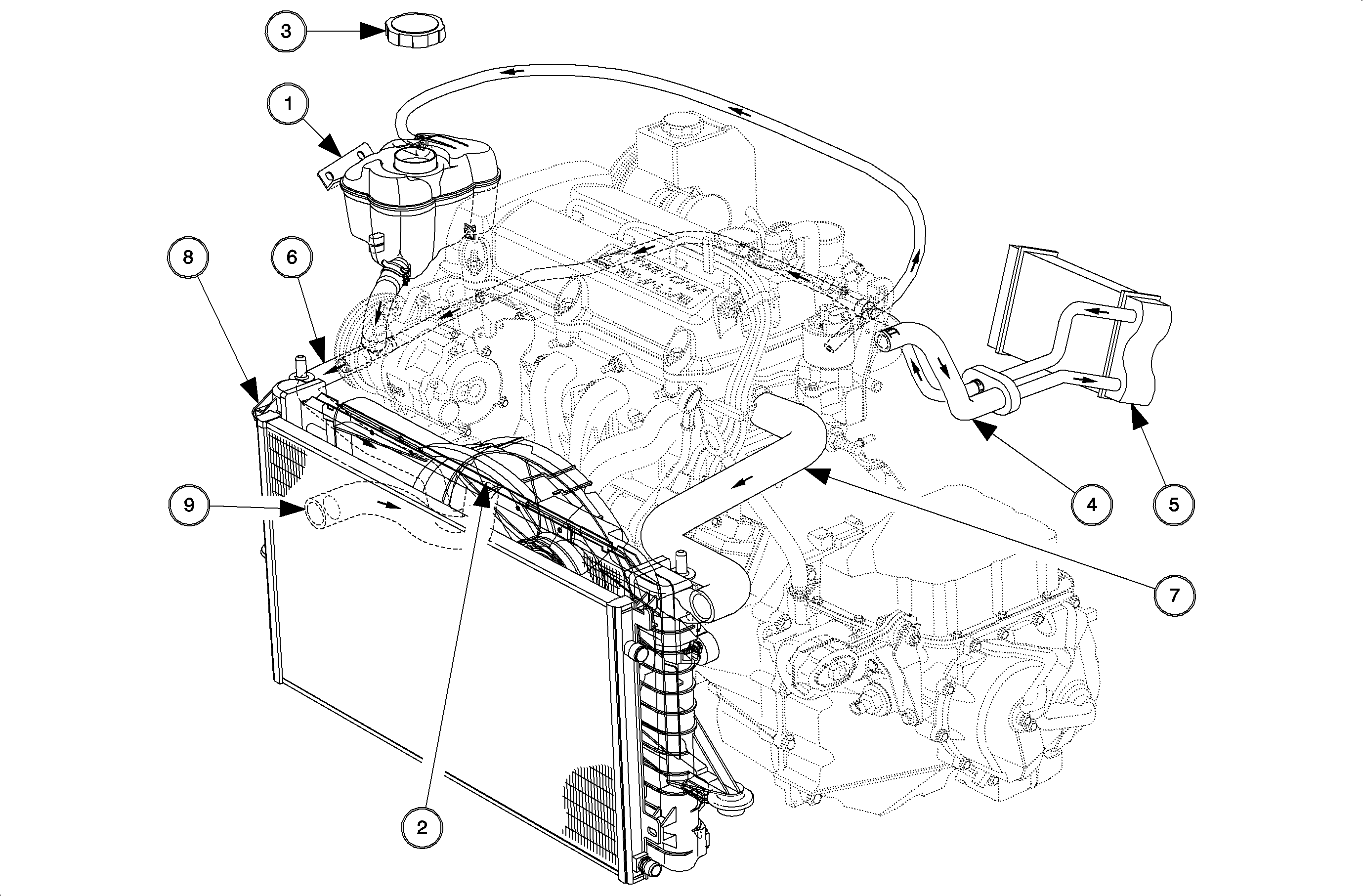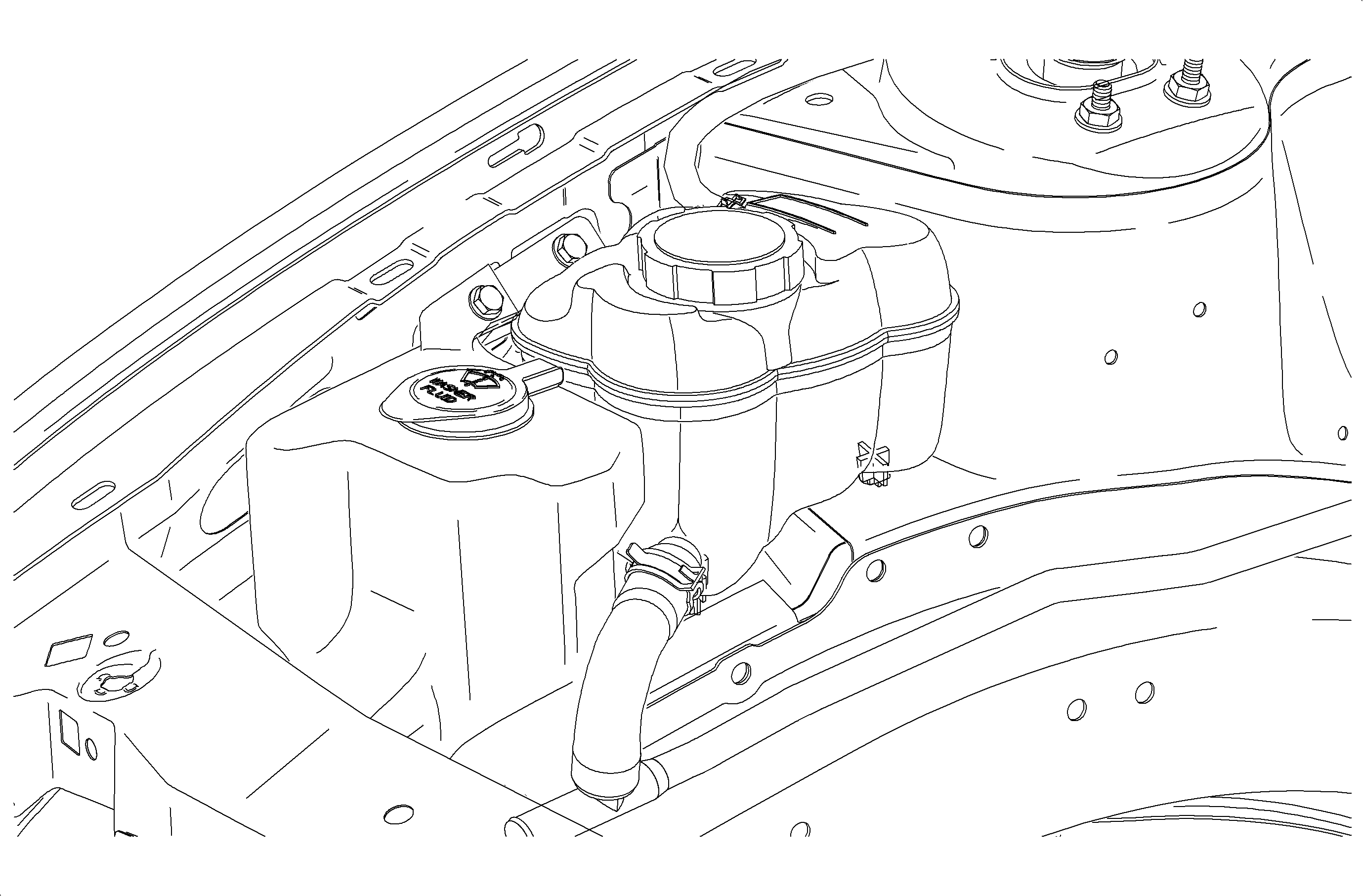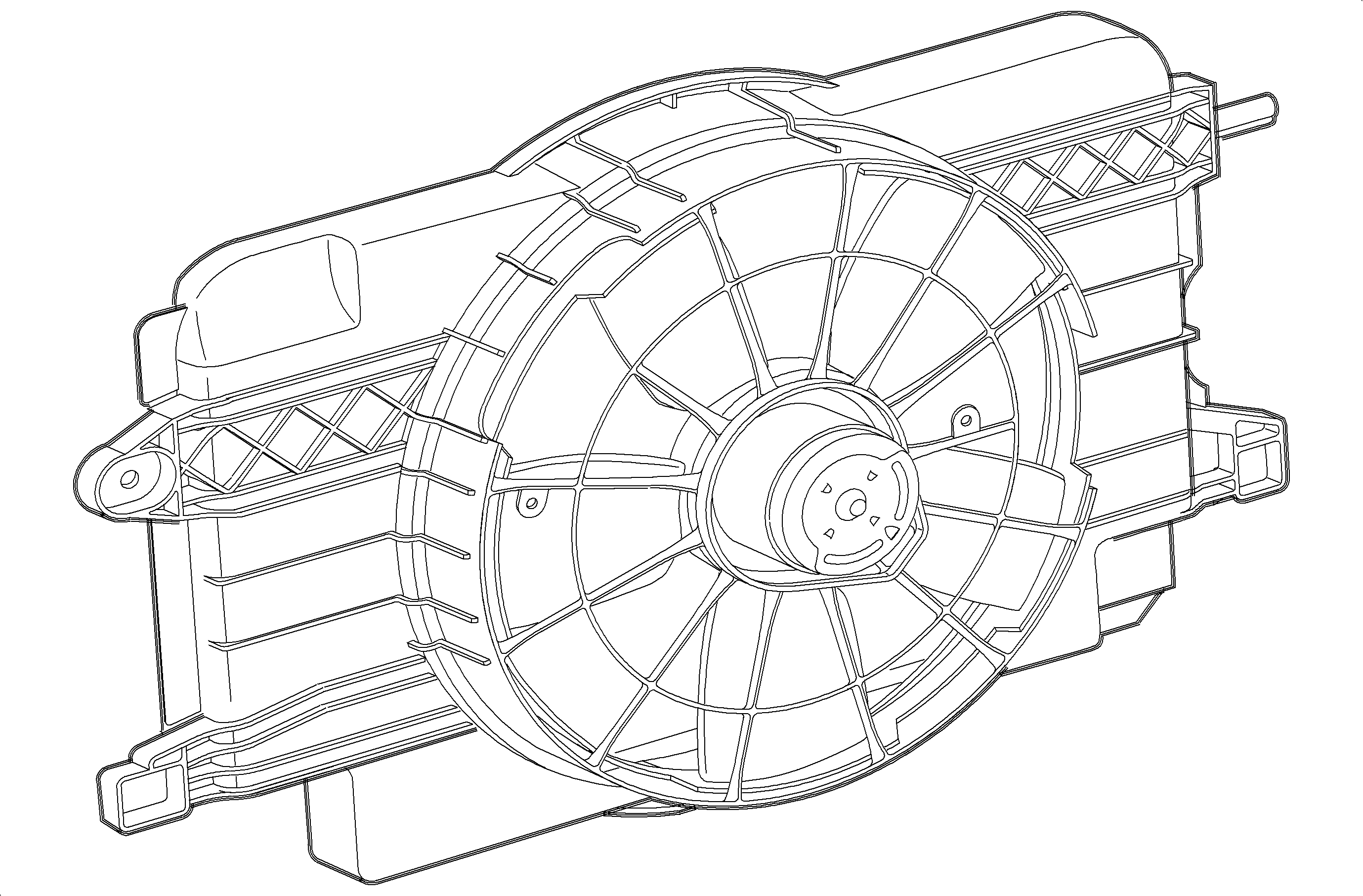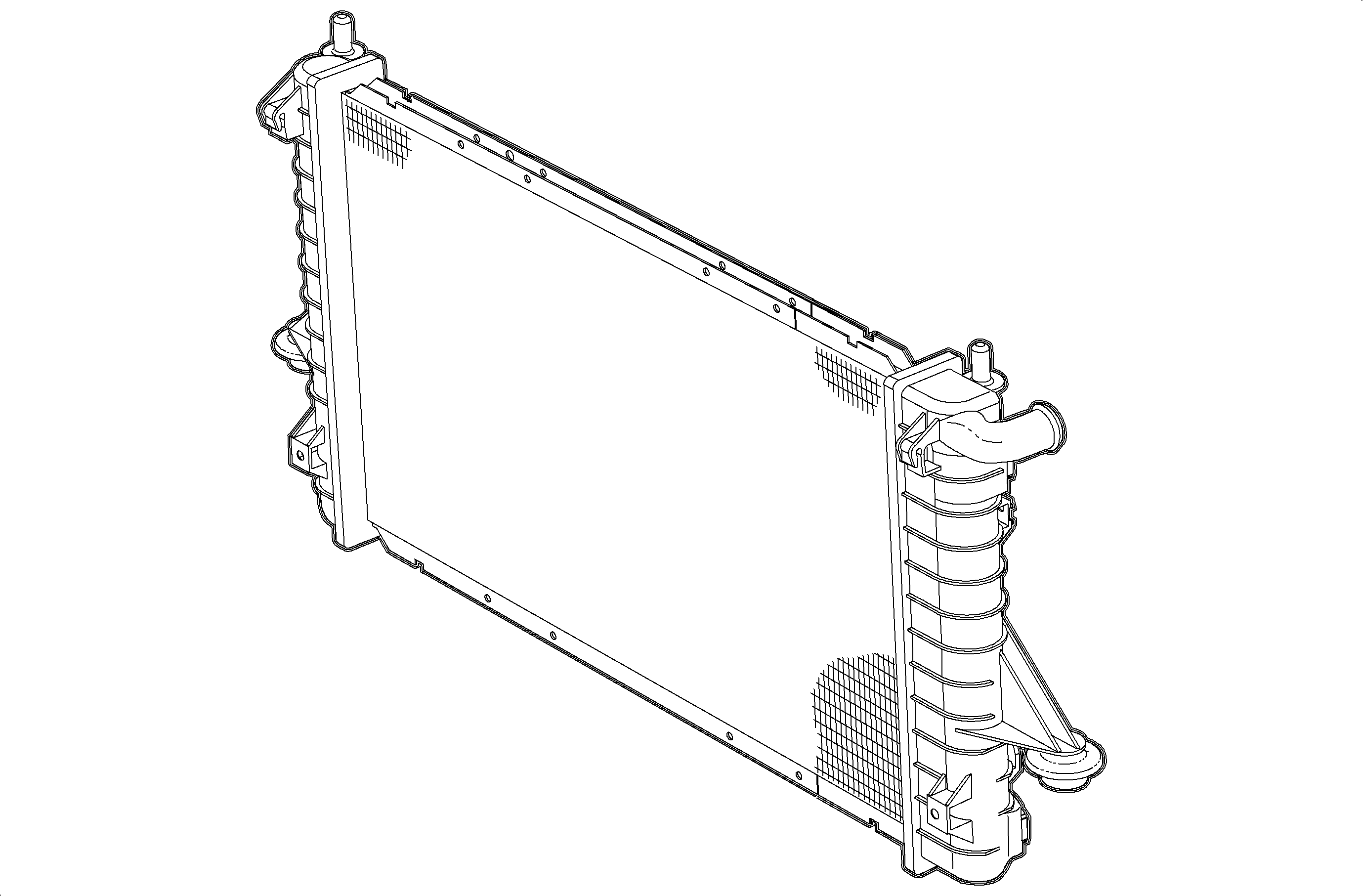Cooling Fan Motor Control
The PCM controls the cooling fan motor by controlling the cooling fan relay. The PCM controls the cooling fan relay by controlling an internal driver that pulls the relay coil circuit to ground. When the relay coil circuit is pulled to ground, the switch side of the relay closes allowing current to flow to the cooling fan motor.
The PCM turns the cooling fan relay ON based on the reading from the engine coolant temperature (ECT) sensor. The ECT sensor is a thermistor that varies resistance according to changes in engine coolant temperature. The PCM supplies a 5 volt reference through a pull-up resistor to the sensor, which is connected to ground. When the sensor is cold, it has high internal resistance, high signal voltage at the PCM. As the sensor temperature increases, its resistance decreases, a low signal voltage at the PCM. The PCM uses the signal voltage to determine the engine coolant temperature.
Under normal operating conditions, the cooling fan motor operates whenever the ECT is greater than 105.5°C (222°F) or the A/C relay is commanded ON below 113 km/h (70 mph). The cooling fan motor will turn OFF when the temperature drops below 100°C (212°F). If the engine is turned OFF and the ECT is above 107°C (225°F), the cooling fan motor can run up to 4 minutes or run until the ECT drops below 107°C (225°F) with the ignition OFF. If a low/high ECT circuit fault resulting in DTC P0117 or P0118 is set, the PCM will command the cooling fan relay ON to protect the engine and transaxle until the condition is corrected.
Coolant Temp Gage
The PCM controls the coolant temp gage by sending a gage position message to the instrument panel (IP) cluster over the Class II link. The PCM receives the engine coolant temperature from the ECT sensor. The gage position for the temperature is buffered, which means the temperature is averaged over a period of time. This allows the gage to move slowly and remain in a relatively stable position as the temperature varies while driving.
Coolant Temp Telltale
The coolant temp telltale is used to alert the driver that the engine or transaxle may be in an overheated condition. The PCM controls the coolant temp telltale by sending a message over the Class II link to the I/P cluster to turn the telltale ON. The PCM will command the telltale ON when the ECT sensor reading is above 118°C (244°F) or the transaxle fluid temperature (TFT) sensor reading is above 140°C (284°F). If this condition exists, the PCM will set DTC P0217 for the ECT and P0218 for the TFT. If a low or high voltage circuit fault exists in either circuit, the signal will be invalid and the PCM will NOT turn ON the coolant temp telltale. The malfunction indicator lamp (MIL) and engine cooling fan relay will be command ON, however.
Coolant Level Telltale
The coolant level telltale is used to alert the driver that the coolant level in the coolant recovery reservoir is low. Low coolant level is detected by the low engine coolant level switch in the bottom of the coolant surge tank. The switch closes when the coolant level in the bottle is full. The switch is supplied ignition voltage from the UHFB and this ignition voltage input is fed directly to the PCM. If the engine is running and the voltage at the PCM is low, indicating no coolant in the coolant surge tank, switch open, the PCM will command the I/P cluster over the Class II link to turn the coolant level telltale ON. If this condition exists for a certain length of time, the PCM will set DTC P1620.
Scan Tool Diagnostics
| • | The engine coolant temperature (ECT) can be read on the scan tool in degrees C or F. |
| • | LOW COOLANT LEVEL can be read on the scan tool as YES or NO. |
| • | The scan tool can "Sweep" all gages to verify the coolant temp gage can move from cold to hot. |
| • | The scan tool can turn ON all I/P cluster lights to verify the coolant temp telltale can be turned ON and OFF. |
Cooling System

The Saturn cooling system has two unique features, a coolant surge tank and an inlet side thermostat. The system is filled through the pressure cap and doesn't require any bleeding. Flow from the tank fills the engine cylinder block, radiator, heater core, and hoses.
During engine operation with the thermostat closed, coolant is pumped through the cylinder block, cylinder head, heater core inlet hose, heater core, heater outlet hose, and back to the thermostat housing. Coolant flows past the thermostat element and back to the water pump inlet. Some coolant is routed back through the engine block to the thermostat cavity. A thermostat by-pass valve controls return coolant flow through the cylinder block and dampens sudden coolant pressure surges by venting coolant back to the water pump suction side.
When the thermostat begins to open the by-pass valve begins to close the cylinder block passage. Coolant flow is then routed from the pump through the cylinder block, head, heater inlet, heater core, heater outlet, and back to the cylinder block. Coolant is also routed through the upper radiator hose, radiator core, lower or outlet radiator hose past the thermostat to the water pump. Coolant flow from the heater return and lower radiator hose wash the thermostat element, thus regulating coolant flow through the lower radiator hose and to the water pump.
Important: During extremely cold weather, -12°C (+10°F) or colder, the engine's coolant temperature will decrease quickly when idling with the heater fan on high speed, and cool air may flow from the heater outlet.
The fan control switch should be set at a slower speed position, fan speed I or II, to maintain the hottest air flow.The Saturn cooling system is filled with DEX-COOL™, a non phosphate, silicate free ethylene glycol-based antifreeze recommended for aluminum engine protection and increased water pump seal life.
Coolant Surge Tank

The coolant surge tank is made of molded plastic. It incorporates a low coolant sensor. This sensor is designed to signal a low coolant level within the reservoir through a light on the dash. A magnetic float assembly moves up and down with the coolant. An electrical switch is held in the closed position by the magnetic float. When the coolant level drops below a pre-determined point, the float assembly drops and opens the switch, which triggers the low coolant light.
Engine Cooling Fan

The A/C fan is 290 mm (11.6 in) long with five unequally spaced blades to provide air flow through the radiator/condenser. The fan is driven by an electric motor which is attached to the fan shroud.
A fan control relay is used by the PCM to control engine cooling fan operation. The engine cooling fan is turned ON or OFF by the PCM dependent upon engine coolant temperature, vehicle speed, or A/C ON request. Under high ambient conditions, the fan may run up to four minutes with the key OFF.
Radiator

A cross-flow radiator is used on all models. Tanks on this type radiator are located to the right and left of the core.
All service radiators have oil coolers with inlet outlet fittings for transaxle fluid circulation. On vehicles equipped with a manual transaxle, keep plugs on cooler fittings.
